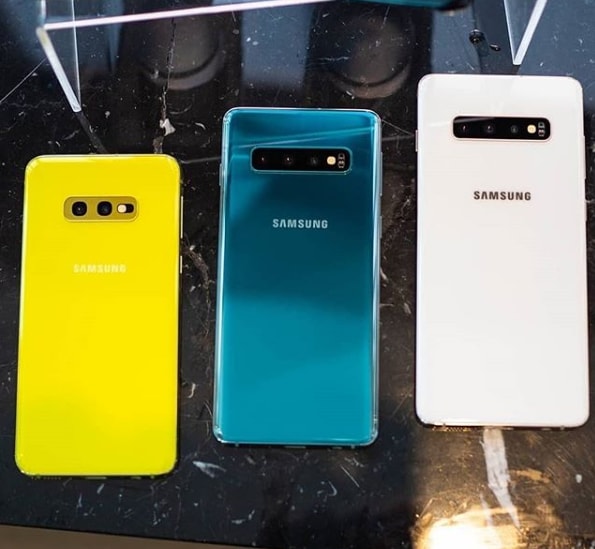Android is unique to almost every other mobile operating system in how much of it is customizable by the user. One way the user can change up the software is by customizing the Home Screen. Most stock Home Screen apps don’t have very many customization options though and that is exactly where the Custom Launcher comes into play.
I love that if you don’t like parts of the Android OS that you can change them. Don’t like the stock SMS app? Change it to a 3rd-party alternative in the Play Store. Don’t like the stock phone dialer? Change it too! All of this can be done from the Default Apps section of the Settings app.
We can’t change everything this way, but we can change the Home Screen thanks to Custom Launcher apps.
For those who are unfamiliar, the Android Home Screen is what you see when you tap/press the Home button. It’s where your installed apps can be accessed (even if you have to dig into the App Drawer), and it is where most people will go to launch any of their applications or games.
Most stock Home Screen apps (AKA Launchers) come with the most basic of basic features. I’m sitting here looking at my Lenovo tablet and the stock Lenovo Launcher app will let me add widgets and set a wallpaper as the background of the Home Screen. That is it.
Custom Launchers in the Google Play Store have dozens (sometimes hundreds) of features.
Popular Custom Launcher Features
I simply do not have the time to download and install all of the available custom launchers that are in the Play Store. Let alone enough time to actually catalog all of the features that each one has to offer. However, I would like to give you a list of some of the popular features that I use daily.
- Gestures
- Double Tap to Sleep
- Swipe Down to Show the Notification Shade
- Swipe Up to Open the App Drawer
- Using Icon Packs
- Hiding App Icons
- Stylize the Look (icon/text size, colors, etc.)
- Change the Number of Rows and Columns
- Adjust Size and Padding of Widgets
- Much, Much More
I really am just touching the tip of the iceberg with this list right here. These are just the features that I personally use on my devices and there are so many more to experiment with. Most even have a feature that will let you import your current Home Screen layout to help get you going.
Custom Launchers Aren’t Created Equally
It’s because of the openness that comes from having Android that we have so many 3rd-party custom launchers to choose from. This means that each application developer gets to pick and choose what they add to the application. Just like any other Android application that gets created.
This means that most launchers for Android have their own set of features.
Sure, there will definitely be some overlap when it comes to the features offered by 3rd-party solutions. For example, I can change the number of rows and columns I have on my Home Screen with the Lawnchair Launcher just like I can with Nova Launcher. However, Nova Launcher offers more customization features.
This gives the user a lot of choices when it comes to what they want to use. I can see how this can be overwhelming and make you stick to your stock one. I know I stayed away from Nova Launcher for years because there were just too many menus and sub-menus to dig through.
When I sat down and dedicated time to learning Nova Launcher though, it instantly became my favorite one.
Even if it takes a long time to figure out everything you can do (and then experiment with visual options to see what you like) the end result is so very satisfying. Granted, I was happy with stock launchers for years but having so many features (especially gesture and icon packs) is what convinced me.
I should note that once you sit down and learn the ins and outs of a complete Custom Launcher like Nova Launcher, you don’t have to go through it again. Once you have things set up the way you want, most modern launchers will give you the option of backing up your current customization settings.
Again, not all launchers are the same though so some may not have this feature.
Most Popular Custom Launchers for Android
Again, I can’t give you a complete list of Android launchers from the Play Store but I can give you a number of really popular ones to choose from. . .
These are the most popular because they either offer an optimized and performant experience, a plethora of customization options, or simply like the look and feel of it. Developers can get creative though and offer a unique experience to the user. This can be anything from imitating iOS, Windows Phone, a 3D environment, or more.
Niche Custom Launchers for Android
How to Install and Set Up an Android Custom Launcher?
The last thing I want to touch on today is showing you how you can download and install one of these useful 3rd-party launchers for Android. You can tap on one of the options linked above or you can search the Google Play Store to find one that suits your style and preferences the most.
Once you find it, go ahead and tap that install button so it can be downloaded.
Once the launcher has been downloaded and installed, go ahead and tap the Home button to close out the Play Store and go back to the Home Screen. Just because we have installed the Custom Launcher doesn’t mean it is set up. As soon as you’re taken to the Home Screen you should see a prompt appear at the bottom.

When you tap that Home button you should see a prompt that looks similar to the image above. The launcher you are currently using will appear at the top and Android will ask if you want to use it as the default option Just Once or Always. You should see your newly installed option in the Use a Different App section.
If you tap Just Once, you will see this prompt every time you tap the Home button.
If you choose one a launcher that isn’t currently set as the default, then it will act as if you tapped the Just Once option for that particular app. Because of this, I recommend using this for the duration of your time experimenting with a new Custom Launcher that you have just installed.
You can always search for “default” in the Settings app to find the Default Apps section and change the Home Screen app to something else. But that can be a pain if you are testing out a bunch of different launcher options. I do this until I settle on one I like and have set it up how I like it.
When you’re ready, tap the Always option and you will no longer see that prompt appear when you tap the Home button.




